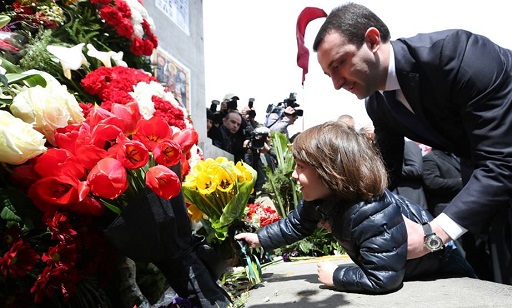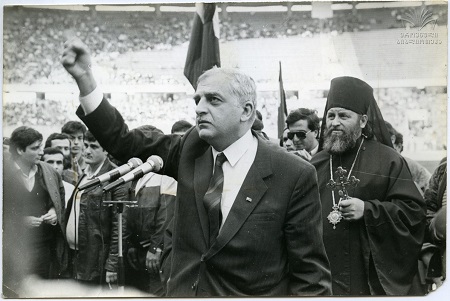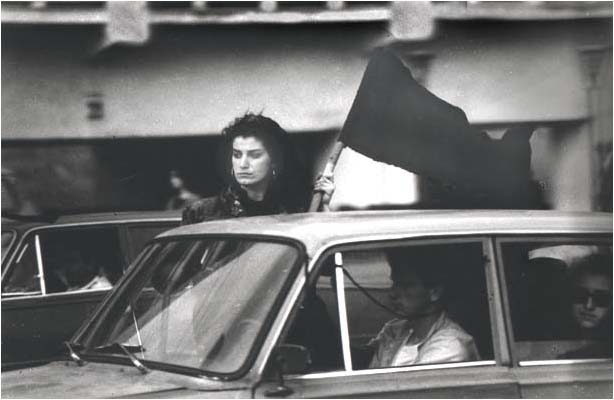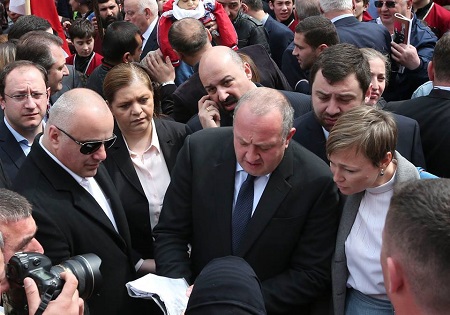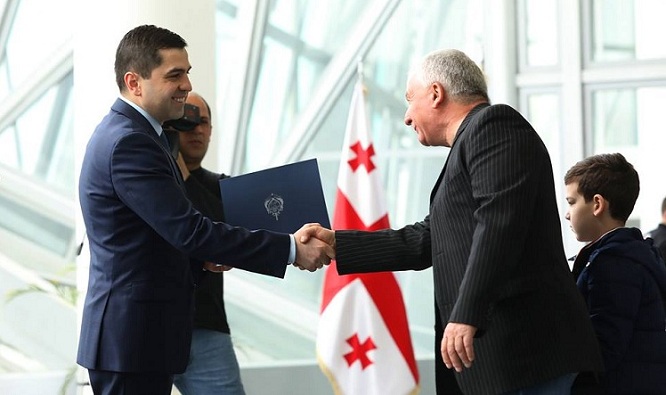Georgia marks 25th anniversary of April 9 tragedy
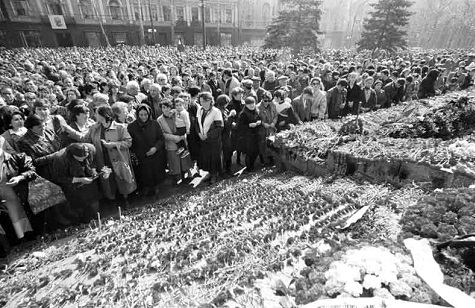
It’s a somber day in Georgia today as the country marks the 25th anniversary of the April 9 tragedy and 23rd anniversary of its independence from the Soviet Union.
On April 9, 1989, at least twenty people were tragically killed as Soviet troops attacked peaceful protesters in Tbilisi.
The date has been etched into the minds of locals and is remembered as the day of National Unity. It is recognized as a public holiday in Georgia.
Habitually, Georgian citizens and relatives of the victims gather at the memorial before the old Parliament building on Rustaveli Ave in Tbilisi, where the tragedy occurred, and light candles and lay flowers to pay tribute to the people who died during the demonstration.
Furthermore, April 9 also marked the restoration of Georgia’s independence, as the Georgian legislative body passed a declaration of independence in 1991 based on the results of the March 31, 1991 referendum, where an overwhelming majority of Georgians voted to secede from the Soviet Union.
History
The anti-Soviet movement became more active in the Georgian SSR in 1988 where several strikes and meetings were organized by anti-Soviet political organizations in Tbilisi. The reason behind the strikes was because of conflict between the Soviet government and Georgian nationalists when several thousand Abkhazians, a Caucasian ethnic group, demanded to be granted full-republic status within the Soviet Union and restoration of the Union republic status of 1921–1931.
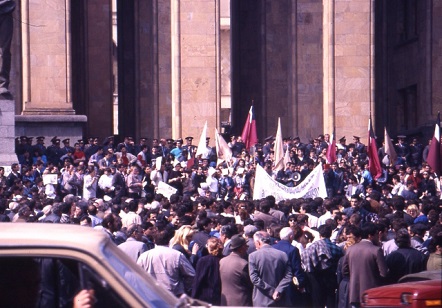
Peacefull demonstration before Parliament building, Tbilisi. Photo from burusi.wordpress.com
In response, the anti-Soviet groups organized a series of informal meetings across the republic and claimed the Soviet government was using Abkhaz separatism in order to oppose the pro-independence movement.
The protests reached their peak on April 4, 1989, when tens of thousands of Georgians gathered before the House of Government on Rustaveli Ave in Tbilisi.
The protesters were led by the Independence Committee, which included Merab Kostava, Zviad Gamsakhurdia, Giorgi Chanturia, Irakli Bathiashvili, and Irakli Tsereteli, who organized a peaceful demonstration and famine strikes, demanding restoration of Georgia’s independence.
Local Soviet authorities lost control of the situation in the capital city and were unable to control the protests. First Secretary of the Georgian Communist Party Jumber Patiashvili asked USSR leaders to send troops to restore order.
April 9, a day of tragedy
In the evening of April 8, 1989, Colonel General Igor Rodionov, who was the Commander of the Transcaucasia Military District, ordered his troops to mobilize.
At 4am on April 9, the special task units of the Soviet Army crushed the protestors who were rallying to demand the independence of Georgia. Sixteen demonstrators were killed at the scene and four others died later from the injuries they sustained on that fateful day. Hundreds of activists were injured and needed medical attention.
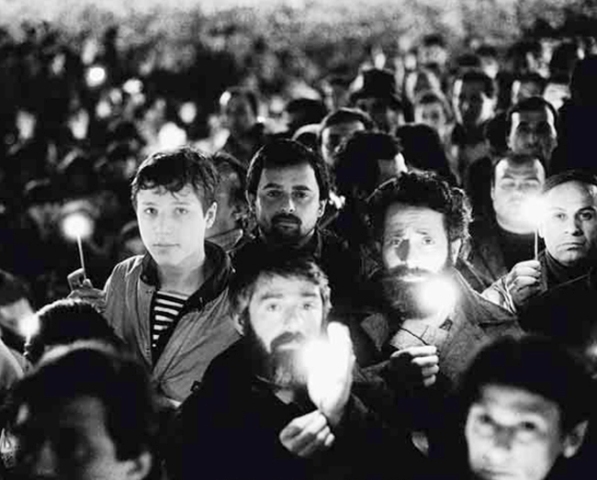
Demonstrators on April 9, 1989.
Autopsies conducted on the victims concluded 15 of the 16 people died as a result of asphyxia, (suffocation) caused by a combination of compression of the body and the inhalation of chemical substances. The other victim died from serious head and brain injuries.
The Soviet troops used toxic agents against the peaceful demonstrators. Later, from clinical and toxicological evidence, experts concluded that in addition to the use of one or two lachrymator (tearing) agents (CN and CS), the Soviet troops most probably used a third toxic agent, called chloropicrin. Twety people were killed, 16 of whom were women.
On April 10, the Soviet government issued a statement blaming the demonstrators for causing unrest and danger to the safety of the general public.
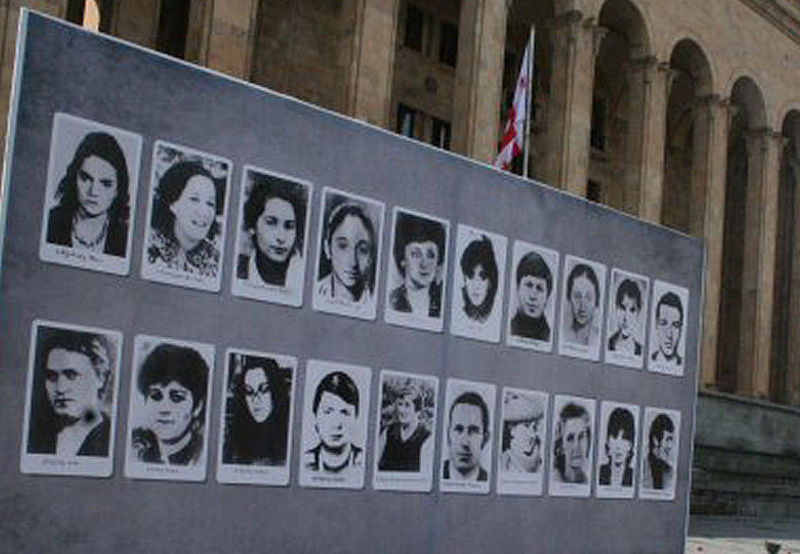
April 9 tragedy Victims Memorial desk. Most of them were young women.
The next day, Georgian television showed the bodies of the 19 women who were violently killed. The images demonstrated alleged brutality of the Soviet soldiers, as the faces of the deceased women were hard to identify because of the facial injuries and blows to the head the women sustained.
Before the massacre, Georgian Catholicos Patriarch Ilia II warned the demonstrators about possible violence and called upon them to leave the central square, but no one listened.

Catholicos Patriarch Ilia II at the demonstration.
On March 31, 1991, Georgians voted overwhelmingly in favor of independence from the Soviet Union in a referendum. With a 90.5 percent turnout, the vast majority of the population (99%) voted in favor of Georgia becoming independent.
On April 9 on the second anniversary of the tragedy, the Supreme Council of the Republic of Georgia proclaimed Georgian sovereignty and independence from the Soviet Union.
April 9, 1989 Massacre of Women by Russians troops, Tbilisi. Watch the video below:
 Tweet
Tweet  Share
Share

